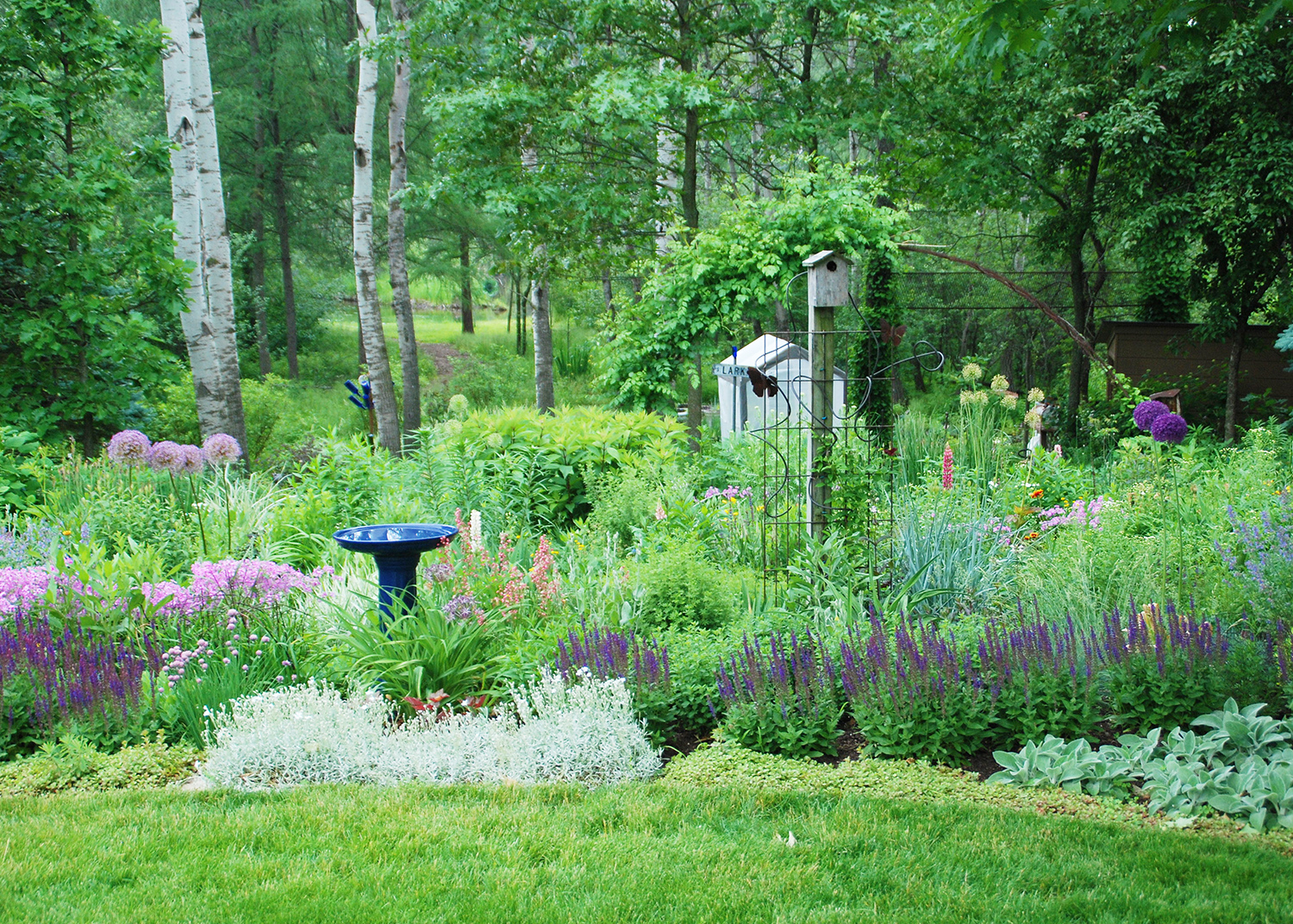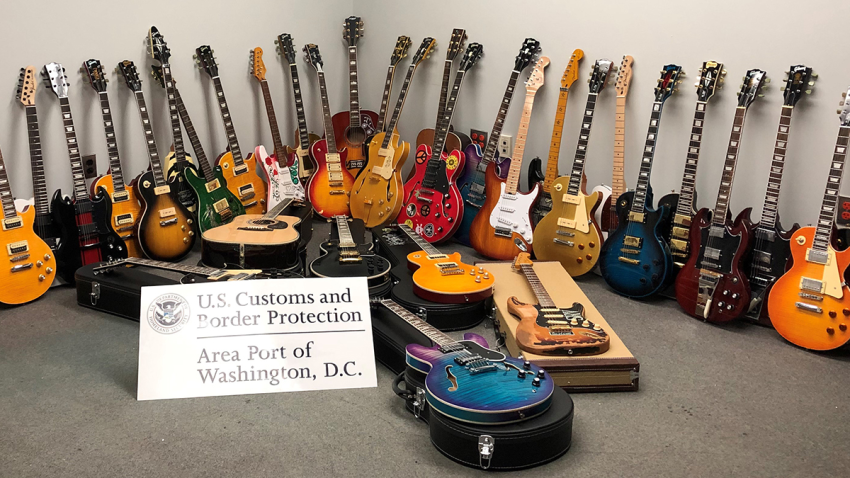
Gardening
Designing a Wildlife-Friendly Landscape

Include habitat features in your garden and landscape that are needed to attract and sustain the wildlife you are trying to attract.
Photo credit: Photo courtesy of MelindaMyers.com
We love watching the bunnies hopping across the lawn or ground squirrels scurrying away with a cheek full of seeds. That is, until they dine on our favorite shrub or take just one bite out of each red ripe tomato in the garden. Finding a way to coexist is critical for wildlife struggling to survive and our enjoyment of nature and our landscapes.
As gardeners, we know that digging in the soil and tending a garden is good for our mind, body, and spirit. Researchers discovered the same is true when we take time to observe wildlife. Our need for a relationship with nature is also important to our wellbeing. It helps us feel more content and function more effectively.
But we love our gardens too. Implementing some design and management strategies can help us support and enjoy wildlife, care for our landscapes, and improve our quality of life.
By reducing the amount of edge habitat, where one type of habitat meets another, can allow us to support wildlife while reducing the risk of damage. Create circular or square garden beds that have more interior space and less border space. Long linear beds with more edges and less interior space allows easier access for animals to dine.
Work with neighbors and your community to create large blocks and corridors of habitat. Providing them spaces, other than your gardens, with needed food and shelter can help you and the wildlife to coexist.
Protect key gardens and plants. Fencing is an option. Make sure your fence is high enough, tight to the ground, and the gates secure.
Repellents are a less obtrusive option. Select a product labeled for the animals and rodents you are trying to manage. For best results, apply repellents before the animals start feeding. Then reapply as recommended on the label. Look for one, like organic, bird- and pollinator-friendly Plantskydd (plantskydd.com), that is rain and snow resistant, requiring fewer repeat applications.
Work with nature to maintain a balance in your landscape. Invite hawks, owls, and fox to your backyard. Grow tall grasses and plants that provide cover for foxes. Include trees with good perches or install perch poles to attract and support raptors.
And like any landscape endeavor, start with a plan. Make a sketch of your existing landscape. Identify existing plants and wildlife-friendly habitats. Make note of both the natural habitats and any supplemental food, water, and shelter you provide. Review and note various features in your landscape throughout the year.
Now decide what you want to accomplish in your landscape. What wildlife do you want to attract and have the space to support? Perhaps you want to attract more songbirds to your gardens or animals, like toads, that help manage pests in the garden.
Make sure your landscape provides the habitat features needed to attract and sustain these welcome residents. You will find lots of helpful resources on National Wildlife Federation, Audubon, Natural Resources Conservation Services, Department of Natural Resources, and University Extension websites.
Be patient and wait for a year to evaluate the results of your efforts. Then begin making any needed changes to meet your goals.
Developing a landscape for you to enjoy and one that supports wildlife takes time, but as a gardener this is not only part of the process but an exciting adventure.
Melinda Myers is the author of more than 20 gardening books, including Small Space Gardening. She hosts The Great Courses "How to Grow Anything" DVD series and the Melinda's Garden Moment TV & radio segments. Myers is a columnist and contributing editor for Birds & Blooms magazine and was commissioned by Tree World Plant Care for her expertise to write this article. Her web site is www.MelindaMyers.com.
Antiques
Antique Reproductions and Fakes

Antiques have been copied for years. For example, in 1876, the Centennial Exposition took place in Philadelphia. Americans were interested in their history and cabinet makers produced many quality reproductions of pieces from the previous century. Often, the goal with reproductions is to create copies of furniture or other antiques for people who couldn't afford to pay what an original would cost. Other times though, the goal is to deceive an unsuspecting buyer.
When I started selling antiques over 30 years ago, a friend informed me that he was running a golf auction. I was new at the antique business and bought some cast iron doorstops of a man and woman golfer that I thought would be a good fit. My friend who was running the auction informed me that the doorstops were reproductions. Someone had artificially aged them by exposing them to weather and hitting them with chains. Even when accurately described as reproductions in his golf auction catalog, the pair sold for well over $200 and I was able to make a small profit, despite my mistake.
Around 15 years ago, I was helping a friend set up his booth at the Brimfield Antique Show. We finished early that night and walked around to see what other dealers were offering for sale. My friend specialized in antique furniture and saw a barrister's bookcase that was reasonably priced. Barrister's (or stacking) bookcases are rectangular sections that fit on top of each other. The glass fronts lift upward and slide inward at the top. When my friend examined the bookcase more closely, he found a "Made in Malaysia" sticker in the back.
Around the same time, we auctioned a great collection of Tiffany Studios desk accessories for a client who had collected them for many years. Fortunately, the collector sold the collection when they did. Many copies have been made in Asia since we sold the collection. The flood of reproductions has caused the price of originals to drop considerably.
There are so many reproductions that it may be easier to list antiques that haven't been reproduced than things that have. A search of Wayfair's website of antique reproductions lists: telephones, tea sets, telescopes, bottle openers, scrimshaw boxes, toilet paper holders, statues, and furniture. There are hundreds more. I should point out that they are doing nothing illegal or unethical by selling these. They are merely offering decorative pieces to people who want them.
On the other hand, U.S. Customs seized 36 fake guitars that were shipped from China, according to a February NBC Washington report. Many of the guitars were Gibson Les Paul copies. A Gibson Ace Frehley had a suggested retail value of $9,000. The total suggested retail value for all the guitars was $158,692. Guitar.com reported that the bogus guitars were in route to buyers in 21 states and Australia.
If you are a collector, here are some things that you can do to make sure you are buying legitimate pieces. Buy from a reputable dealer. Learn as much about the items you collect. Before I became a full-time auctioneer, I spent a lot of free time in local antique shops. If I saw the same item in multiple shops I looked closely and found it was typically either a reproduction or a recent warehouse find. Sometimes, it can be obvious that what you are looking at is a reproduction. If you see "copy of", "reproduction", or a modern "Made in China" label on a piece, you don't have to look any further.
We will soon auction another group of antique, vintage, and contemporary model trains, die-cast cars, and other toys online. We also picked up a large collection of sports and non-sports cards that will be sold by online auction. We are also still accepting quality consignments of valuable items like jewelry, coins, art, and better collectibles for our May multi-estate auction. See our website for details: https://centralmassauctions.com
Contact us at: Wayne Tuiskula Auctioneer/Appraiser Central Mass Auctions for Antique Auctions, Estate Sales and Appraisal Services www.centralmassauctions.com (508-612- 6111) info@centralmassauctions.com